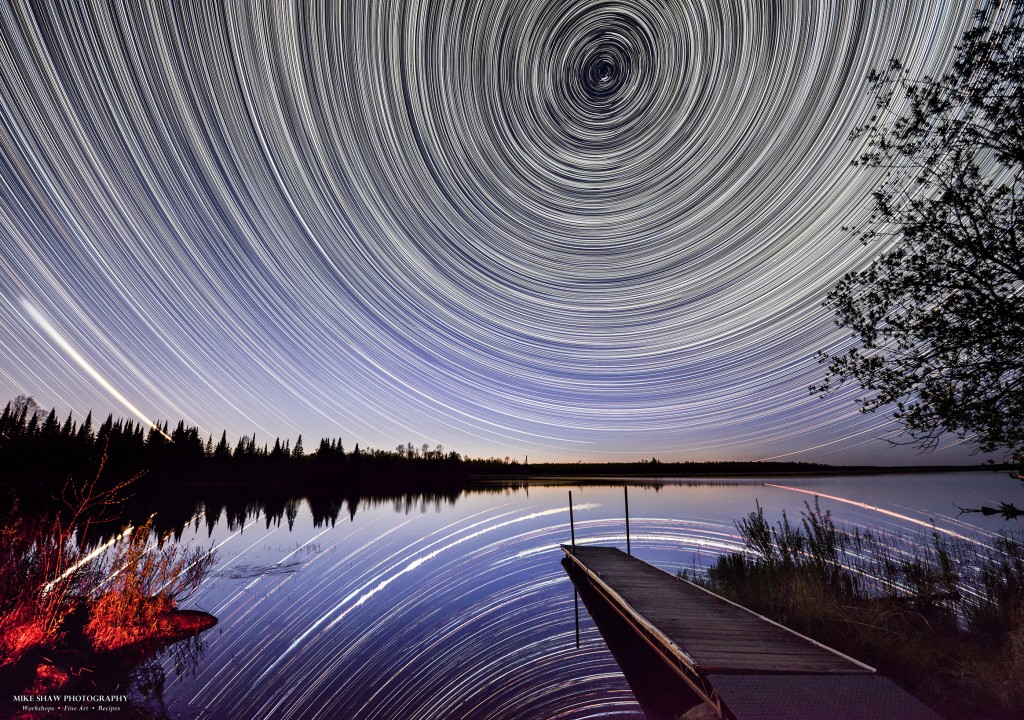
The clear, exceptionally dark skies of northern Minnesota are the perfect canvas for star-gazing. As the sun slips below the horizon, the skies literally light up from the lights of thousands upon thousands of stars. By combining, or “stacking,” multiple exposures into a single image, the movement of each individual star can be neatly captured as a single, composite star trail image. In this star trail image, 399 30-second images were combined resulting in a total exposure of over three hours. The image was made using a 14-mm focal length on a 14-24 mm zoom lens, which accounts for the wide field of view. This lens was selected to include the North Star, at approximately 47° above the horizon (corresponding to the local latitude of 47°), within the roughly 80° lateral field-of-view of the lens. The other camera settings were an aperture (f-stop) of f/4 with an ISO of 1600 on a Nikon full-frame camera.
The image was made facing generally north, so the stars appear to rotate in a counterclockwise direction around the North Star during the night. If you look carefully you’ll see several short streaks from shooting stars! And the large, bright track to the left is Venus.
The images were stacked with the Waguila script (http://www.waguilaphotography.com/blog/waguila_startrail_stacker-script), then post-processed with Lightroom, Nik Viveza & Nik Color Efex 2; both plug-ins for Photoshop.
If you’d like to learn how to easily create images like this yourself, come join us on our new Night Photography course!
– BPSOP Instructor: Mike Shaw
Mike Teaches: Star Trails & Night Photography










